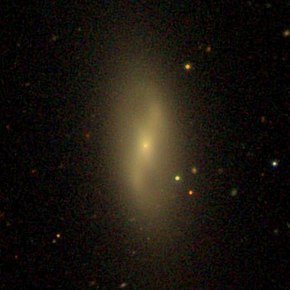
NGC 7012 is a large, bright elliptical galaxy located about 380 million light-years away from Earth in the constellation Microscopium. NGC 7012 was discovered by astronomer John Herschel on July 1, 1834. NGC 7012 is also is host to a supermassive black hole with an estimated mass of 4.5 × 109M☉. NGC 7012 is very large galaxy, with an estimated diameter of nearly 300,000 light years.
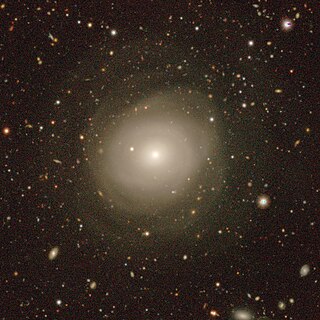
NGC 466 is a lenticular galaxy located about 227 million light-years away from Earth in the constellation Tucana. NGC 466 was discovered by astronomer John Herschel on October 3, 1836.
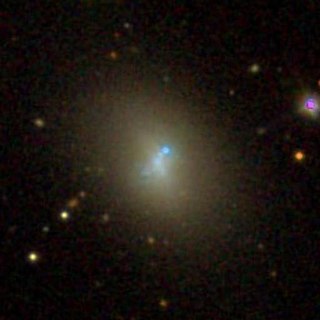
NGC 7077 is a lenticular blue compact dwarf galaxy located about 56 million light-years away from Earth in the constellation Aquarius. Discovered by astronomer Albert Marth on August 11, 1863, the galaxy lies within the Local Void.
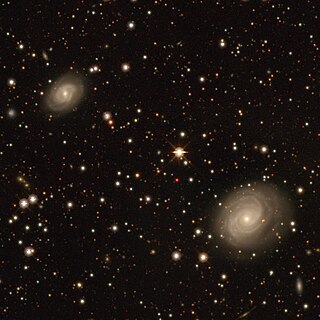
NGC 7043 is a barred spiral galaxy located about 200 million light-years away in the constellation of Pegasus. NGC 7043 is part of a pair of galaxies that contains the galaxy NGC 7042. It has an estimated diameter of 73,100 light-years. NGC 7043 was discovered by astronomer Albert Marth on August 18, 1863.

NGC 7816 is a spiral galaxy located about 215 million light-years away in the constellation of Pisces. It was discovered by astronomer William Herschel on September 26, 1785.

NGC 4489 is a dwarf elliptical galaxy located about 60 million light-years away in the constellation of Coma Berenices. It was discovered by astronomer William Herschel on March 21, 1784. NGC 4489 is a member of the Virgo Cluster.

NGC 4483 is a barred lenticular galaxy located about 55 million light-years away in the constellation of Virgo. NGC 4483 was discovered by astronomer Heinrich d'Arrest on March 19, 1865. NGC 4483 is a member of the Virgo Cluster.
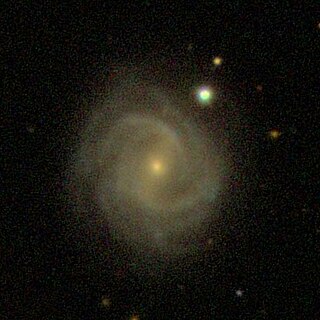
NGC 2503 is an isolated spiral galaxy approximately 254 million light-years away in the constellation Cancer. The galaxy was discovered on February 17, 1865 by astronomer Albert Marth.
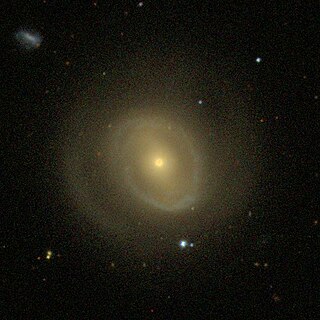
NGC 4454 is a barred spiral galaxy located about 123 million light-years away in the constellation of Virgo. NGC 4454 was discovered by astronomer William Herschel on April 17, 1784.

NGC 4464 is an elliptical galaxy located about 70 million light-years away in the constellation of Virgo. NGC 4464 was discovered by astronomer William Herschel on December 28, 1785. NGC 4464 is a member of the Virgo Cluster.
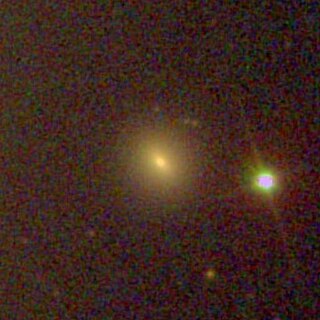
NGC 4467 is an elliptical galaxy located about 78 million light-years away in the constellation of Virgo. NGC 4467 was discovered by astronomer Otto Struve on April 28, 1851. NGC 4467 is a companion of Messier 49 and is a member of the Virgo Cluster.
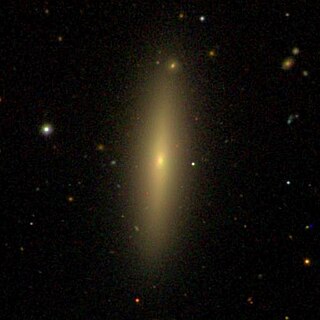
NGC 4623 is an edge-on lenticular or elliptical galaxy located about 54 million light-years away in the constellation of Virgo. NGC 4623 is classified as an E7, a rare type of "late" elliptical that represents the first stage of transition into a lenticular galaxy. NGC 4623 was discovered by astronomer William Herschel on April 13, 1784. NGC 4623 is a member of the Virgo Cluster.

NGC 4612 is a barred lenticular galaxy located about 57 million light-years away in the constellation of Virgo. NGC 4612 was discovered by astronomer William Herschel on January 23, 1784. The galaxy is a member of the Virgo Cluster.
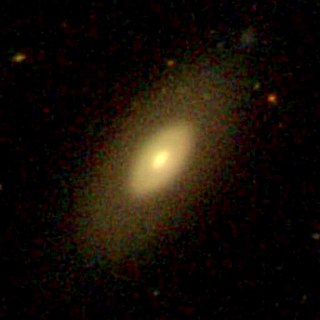
NGC 4919 is a lenticular galaxy located about 340 million light-years away in the constellation of Coma Berenices. NGC 4919 was discovered by astronomer Heinrich d'Arrest on May 5, 1864. NGC 4919 is a member of the Coma Cluster.

NGC 4754 is a barred lenticular galaxy located about 53 million light-years away in the constellation of Virgo. NGC 4754 was discovered by astronomer William Herschel on March 15, 1784. It forms a non-interacting pair with the edge-on lenticular galaxy NGC 4762. NGC 4754 is a member of the Virgo Cluster.
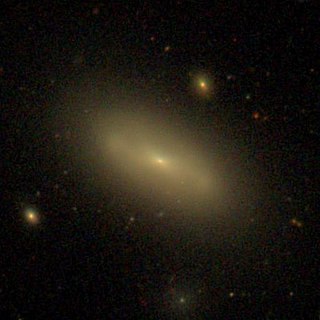
NGC 4497 is a lenticular galaxy located about 60 million light-years away in the constellation Virgo. NGC 4497 was discovered by astronomer William Herschel on March 15, 1784. It was rediscovered by astronomer Arnold Schwassmann on November 8, 1900 and was listed as IC 3452. NGC 4497 is a member of the Virgo Cluster.

NGC 4498 is a barred spiral galaxy located about 50 million light-years away in the constellation Coma Berenices. NGC 4498 was discovered by astronomer William Herschel on March 21, 1784. NGC 4498 is a member of the Virgo Cluster.

NGC 4503 is a barred lenticular galaxy located around 41 to 74 million light-years away in the constellation Virgo. NGC 4503 was discovered by astronomer William Herschel on March 15, 1784. NGC 4503 is a member of the Virgo Cluster.
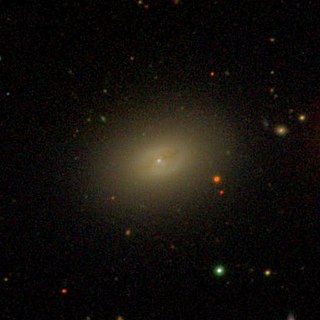
NGC 4506 is a spiral galaxy located around 50 million light-years away in the constellation Coma Berenices. It is classified as peculiar due to the presence of dust that surrounds its nucleus. NGC 4506 was discovered by astronomer William Herschel on January 14, 1787. It is a member of the Virgo Cluster.

NGC 521, also occasionally referred to as PGC 5190 or UGC 962, is a barred spiral galaxy located approximately 224 million light-years from the Solar System in the constellation Cetus. It was discovered on 8 October 1785 by astronomer William Herschel.
